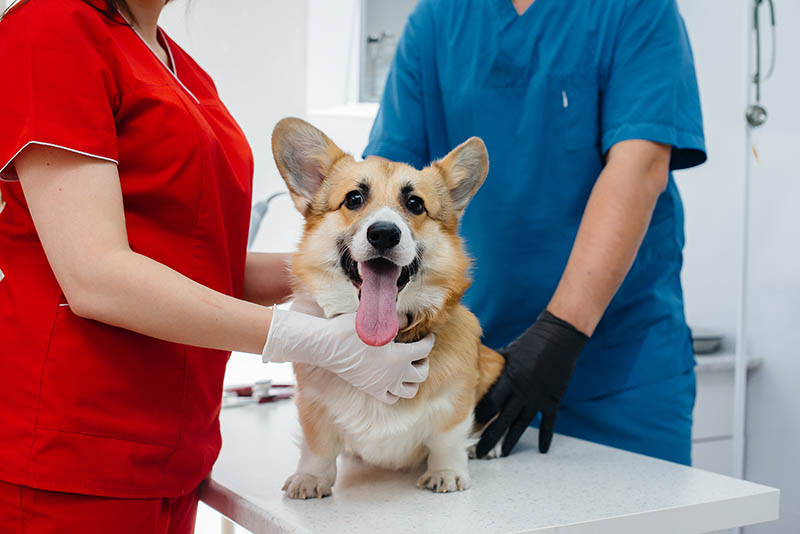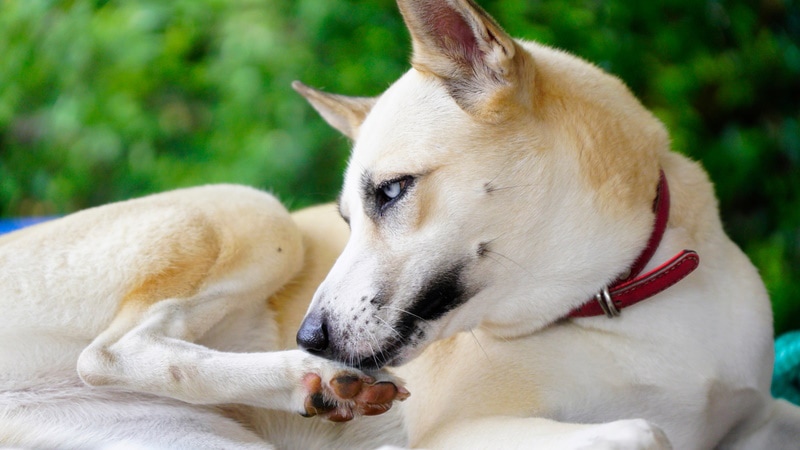What Bones Can I Feed My Dog? 5 Preferred Options
By Ashley Bates
Updated on
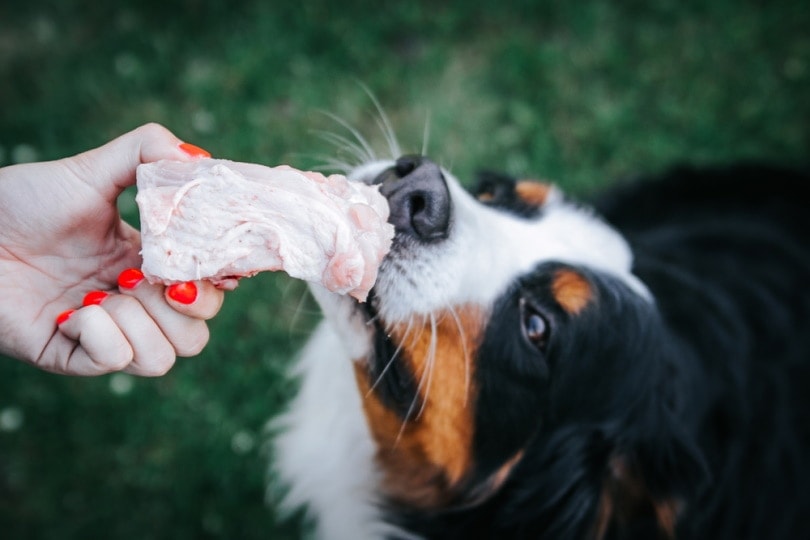
Bones provide an added source of calcium and other minerals to your dog’s daily diet. People who choose to go raw for their pets often look for additional bone options to aid in overall health. But we’ve all heard the dreaded stories about how bones are bad for your pooch.
So what gives? Here we’re going to go over all the bone options your dog can chew on as well as preferred methods to serve bones to your dog safely.
The 5 Prefered Options of Bones to Feed Your Dog
1. Chicken Bones

You might shoo your dog away from the trash to get him away from chicken bones. However, some raw chicken bones can benefit your dog’s diet. Raw, meaty chicken bones, such as necks, can be delicious treats for smaller-sized dogs. Since the meat around the bone is raw, it is very important to source from fresh and reliable places. Your dog’s digestive system should also be eased into raw food. Please keep your dog under observation whenever you offer a bone.
2. Lamb Bones
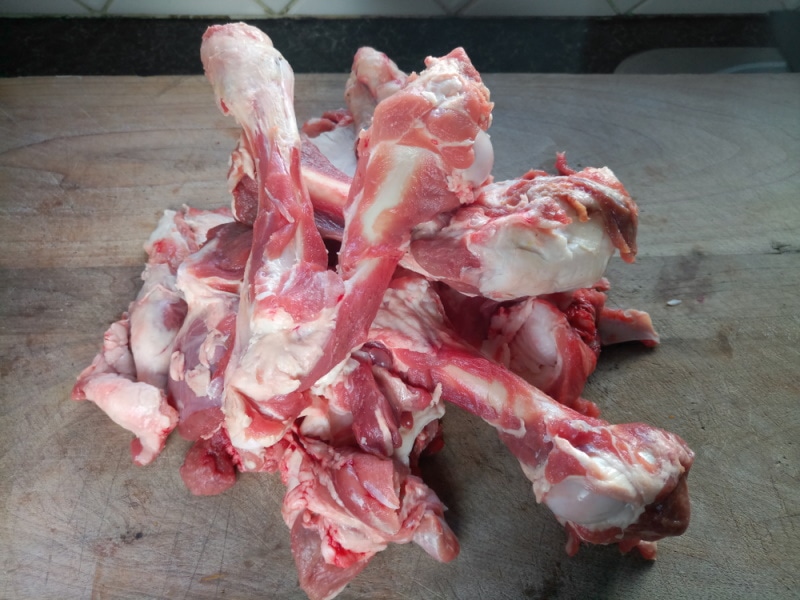
Lamb bones are very good for your dog as they provide an extra source of minerals and tooth-cleaning power. However, these bones might be best suited for larger breeds, as they tend to be bigger and can be too large for some small breeds’ mouths. Weight-bearing dense bones should be removed once the meat around them is consumed. These kinds of bones are better fed finely ground, as they can be too hard and may injure teeth.
3. Beef Bones

Beef bones are another suitable type of bone to give your dog. We recommend beef bones for larger breeds due to their size and consistency. As usual, please supervise your dog and remember to remove these very dense bones once all the meat around them has been consumed by your dog.
4. Turkey Bones

Raw turkey bones, like chicken bones, can be very healthy to add to your dog’s diet. A turkey neck is a great alternative for a medium-sized dog.
Read More: Can Dogs Eat Turkey Bones? Vet-Approved Risks & Safety Tips
5. Oxtail

Oxtail refers to the tail of cattle. Some buy them as cross sections with a thick bone in the middle that is encased by meat and fats. These types of bones tend to work best for medium to large breeds.
Raw vs. Cooked Bones
Raw bones are much safer to feed your dog because cooked bones tend to splinter more often, causing dangerous bone shards to pierce the stomach and intestines when ingested. Raw bones do not have the same general effect.
Cooked bones not only splinter easily, they also are depleted of their nutrients. Raw bones contain calcium and phosphorus, two extremely crucial and beneficial minerals your dog needs to stay healthy.
Benefits of Raw Bones
Dogs in the wild benefit greatly from chewing on the bones of the animals. It provides an added portion of calcium in their diet, helps clean their teeth and gums, and gives other important minerals. Adding raw bones to your dog’s diet gets them in touch with their natural roots.
In the dental aspect, raw bones contain natural enzymes which help break down biofilm on teeth. These bones gently work to scrape the plaque off the teeth, helping your canine keep up with dental hygiene. Since periodontal disease is so prevalent in dogs, adding raw bones is an extra layer of protection on top of routine brushing to keep their pearly whites looking their best.
Added calcium to the diet keeps your dog’s bones healthy and strong. As adults, it helps them maintain healthy bone structure and teeth, but it also helps with muscle maintenance, heart function, and regulates the nervous system.
Phosphorus works alongside calcium to provide homeostasis in a canine’s body. Like calcium, phosphorus promotes healthy teeth and bones—but that’s not all. Phosphorus also helps regulate your pup’s metabolism and kidney function.
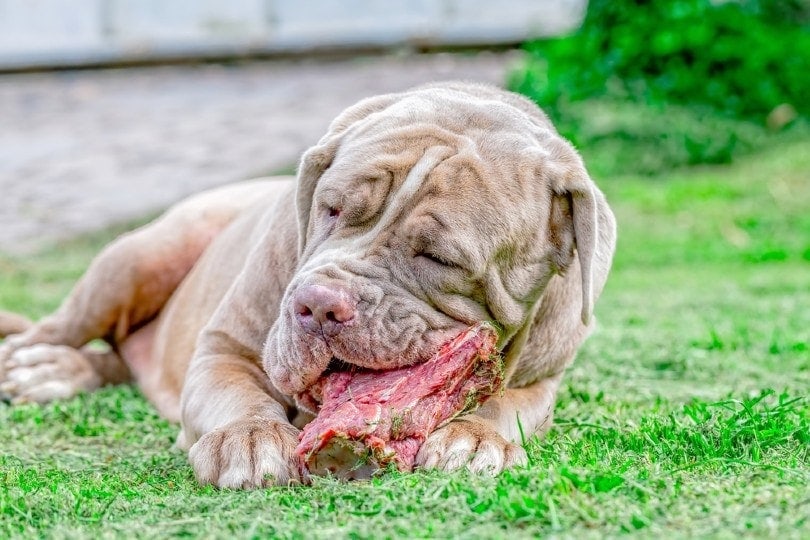
Negatives of Raw Bones
One of the biggest downfalls of adding bones to your dog’s diet is that it can pose a choking hazard. Certain pieces of bone might fragment or get lodged. If this happens, an emergency vet visit may be in your near future.
Bone fragments can cause your dog to choke and get trapped in the digestive tract, tearing the intestines or creating a dangerous blockage. To combat this potential problem, supervision should always be taken seriously when your dog has bones.
Breed Matters When Serving Bones
To prevent choking and other hazards, you should offer large breed dogs bones that aren’t easy to swallow. Certain bones, like chicken bones, might be too small, causing lodging, choking, or intestinal blockage if one is swallowed. Smaller dogs, on the other hand, benefit more from smaller bones to make chewing easy.
Dogs That Shouldn’t Eat Bones
If your dog has sensitive teeth, stomach issues, or other sensitivities, adding raw bones might not be the best option. If your dog has any dietary restrictions, it’s always best to check with your veterinarian to make sure adding in raw bones will benefit them.
Image Credit: Andrii Medvednikov, Shutterstock
Raw Bones in Raw or Homemade Diets
Raw bones are starting to be a really popular addition to raw and homemade diets. As light is shed on the pet food industry, it’s plain that the influx of holistic, healthy, fresh, and raw diets will soon overtake wet canned food and kibble.
Dogs are getting back in touch with their natural roots, and nutritionists are starting to promote natural diets that cater to a dog’s primal health. Many pet owners who opt for this diet add raw bones as a calcium supplement.
How to Serve Bones
You should always ensure that the bones you serve have some meat for chewing only. It would help if you always supervised your dog with bones to prevent choking and consumption. If it seems like your dog is being a little too rough while attempting to swallow the bone, it’s best to remove the bone from its possession.
Rawhides
If you have heard that rawhide is bad for your dog, we have to say this is true. The entire purpose of rawhide is to be long-lasting chew toys that slowly break down into soft pieces. Even though these dog treats are readily available in almost any department or feed store, it doesn’t make them healthy choices.
But many dogs have powerful jaws and are quite impressive chewers. They tend to break these pieces off prematurely before they have time to soften, which can cause intestinal blockages or choking hazards that can be life-threatening.
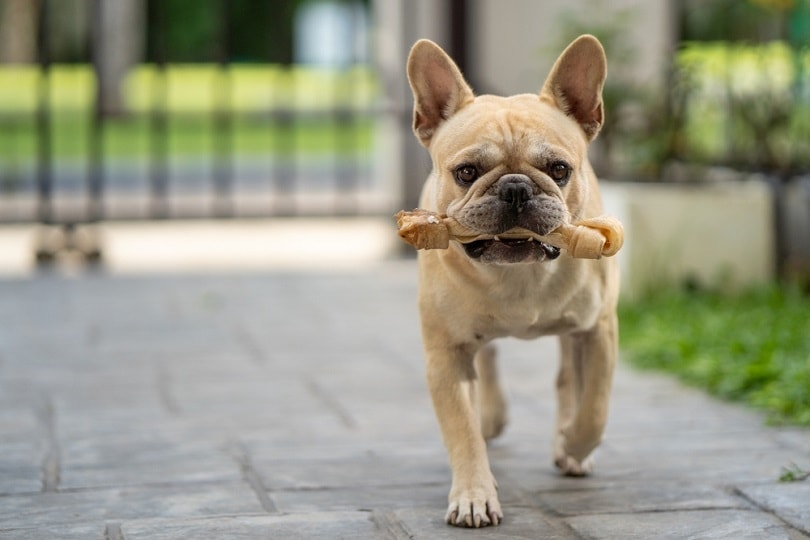
Conclusion
Feeding your dogs raw bones can be a safe and nutritionally beneficial option. However, it doesn’t come without its dangers. Always consult your veterinarian to ensure your dog is a good candidate for raw bone chewing, and remember to supervise your dog when giving them this treat.
Bones have their fair share of benefits and work very well alongside raw or fresh food diets. Remember never to offer your dog cooked bones, as they splinter and can damage your dog’s esophagus, stomach, or intestinal tract.
See also:
Featured Image Credit: Eve Photography, Shutterstock



